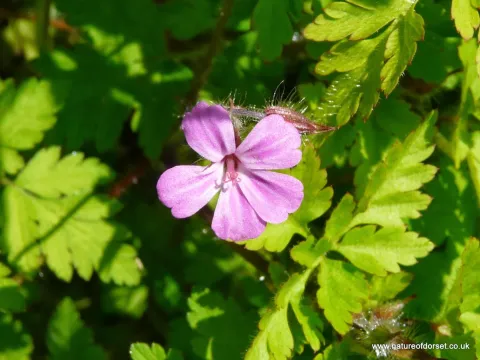In Depth
| Geraniums - geraniaceae |
|---|
Title: Geranium Family (Geraniaceae): Exploring the Delightful World of Geraniaceae: Botanical Elegance and Garden FavoritesIn the realm of horticulture and botanical beauty, few families rival the charm and versatility of Geraniaceae. This diverse and widespread family encompasses a wide range of species, from delicate perennial geraniums to fragrant pelargoniums, captivating gardeners, landscapers, and flower enthusiasts with their unique characteristics and ornamental appeal. Join us on a journey through the delightful world of Geraniaceae, where botanical elegance and garden favorites converge. Diversity and Distribution Geraniaceae is a family of flowering plants known for its diversity and global distribution. With over 800 species distributed across five genera, including Pelargonium and Geranium, the family exhibits a wide range of forms, habits, and growth patterns. From trailing groundcovers to upright shrubs and compact bedding plants, Geraniaceae species thrive in a variety of climates and soil conditions, making them popular choices for garden landscapes worldwide. One of the defining features of Geraniaceae plants is their attractive foliage and colorful blooms, which add vibrancy and visual interest to garden compositions. Pelargoniums, in particular, are prized for their showy flowers in shades of pink, red, white, and purple, as well as their aromatic leaves, which release a delightful fragrance when brushed or crushed. Cultural Significance Geraniaceae plants have a long history of cultivation and cultural significance dating back centuries. In Victorian-era England, pelargoniums were highly prized for their ornamental value and were commonly grown in conservatories and greenhouses as symbols of refinement and elegance. Similarly, geraniums have been cherished for their resilience and beauty, adorning gardens, balconies, and window boxes with their cheerful blooms and attractive foliage. Furthermore, Geraniaceae plants have inspired artists, poets, and writers throughout history, with their graceful forms and vibrant colors serving as subjects for paintings, poems, and botanical illustrations. The timeless appeal of these plants, combined with their association with beauty and romance, continues to captivate and inspire creative expression. Horticultural Importance Beyond their cultural significance, Geraniaceae plants are highly valued for their horticultural appeal and versatility in garden landscapes. Pelargoniums, in particular, are popular choices for container gardening, bedding displays, and hanging baskets, thanks to their long blooming season and tolerance of drought and heat. Geraniums, with their mounding habit and prolific flowers, are prized for their ability to fill garden borders and rockeries with color and texture. In addition to their ornamental value, some Geraniaceae species have practical uses in the garden, serving as natural pest repellents or companion plants. For example, scented geraniums (Pelargonium spp.) are known for their aromatic foliage, which can help deter pests such as mosquitoes, aphids, and whiteflies, while attracting beneficial insects such as bees and butterflies. Conservation and Stewardship While many Geraniaceae species are widespread and abundant, some face threats from habitat loss, overcollection, and climate change. Conservation efforts aimed at protecting these plants and their habitats are therefore essential for preserving biodiversity and ecosystem health. Additionally, promoting sustainable gardening practices and supporting the cultivation of native Geraniaceae species can help mitigate the impact of human activities on wild populations. By selecting locally adapted varieties and avoiding the introduction of invasive species, gardeners and landscapers can contribute to the conservation of Geraniaceae diversity while creating beautiful and ecologically sustainable landscapes. Conclusion Geraniaceae stands as a testament to the enduring beauty and horticultural significance of plant life on Earth. From the colorful blooms of pelargoniums to the elegant foliage of geraniums, these botanical treasures continue to enchant and inspire all who encounter them. By understanding and appreciating the significance of Geraniaceae, we can cultivate a deeper connection to the natural world and work towards its conservation and stewardship for generations to come. |








